
views
X
Research source
- Popcorn lung, or bronchiolitis obliterans, is caused by exposure to diacetyl—the chemical found in fake popcorn flavoring.
- Core signs of popcorn lung include a dry cough, fever, weight loss, wheezing, and shortness of breath.
- Popcorn lung is extremely rare today, and the most common way to get it these days is by receiving a lung transplant.
- While diacetyl is found in vape pens, THC cartridges, paints, and various chemicals, you’re extremely unlikely to develop popcorn lung without intense, prolonged exposure.
Recognizing Symptoms of Popcorn Lung
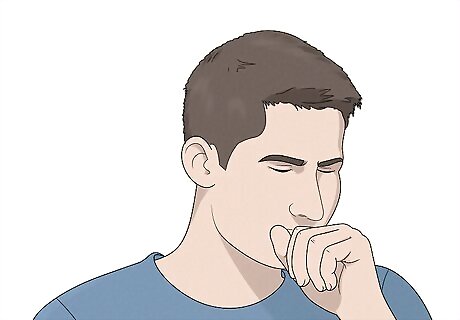
A dry cough and shortness of breath If you’re coughing up mucus or your coughing is triggered by nasal fluids in the back of your throat, it can’t be popcorn lung. One of the key identifying factors is a dry cough with no phlegm or mucus, combined with a passive feeling of shortness of breath. These symptoms gradually get worse over a period of weeks or months. If you don’t have either of these symptoms, it is extremely unlikely that you have popcorn lung. If your shortness of breath gets to a point where it’s hard to breathe, go to the emergency room ASAP. Don’t wait for the symptoms to get worse. If you work around chemicals or at a factory, popcorn lung can be triggered by a powerful exposure to several noxious chemicals. If these symptoms set in 2-12 weeks after intense exposure to a gas, smoke, or chemical odor, see a doctor. Often, this coughing and shortness of breath will get worse with exercise or heavy lifting. If your cough is wet or you’re hacking up phlegm and you have other symptoms listed here, you may have bronchiolitis. This condition usually goes away on its own after a few days.
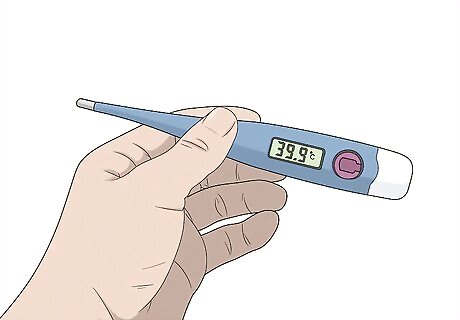
A fever and fatigue These symptoms may disappear and come back periodically, so wait until they come on to take your temperature. If you’re running a fever and feel especially tired, you could have popcorn lung. If you have some of these other symptoms but you don’t have a fever, you may have asthma.
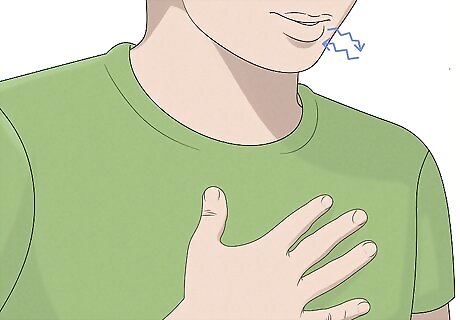
Wheezing noises when you breathe Listen carefully when you’re breathing to see if there’s a kind of squeaking or grainy sound coming out of your throat when you aren’t actively exercising or moving. If you have all of these symptoms, you may have popcorn lung. The wheezing symptom is not universal. You can still have popcorn lung without the wheezing, although this is fairly uncommon. Wheezing when you’ve just finished running or lifting can be caused by any number of things—you’re looking to see if you’re wheezing when you aren’t exerting yourself here. The people that experience the wheezing tend to notice the sound gets louder over time.
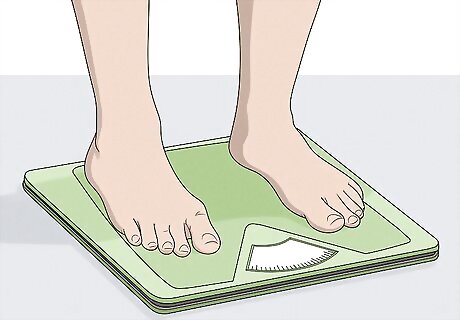
Unexplainable weight loss It can be hard to tell if you’re losing weight if you haven’t weighed yourself recently. Get on the scale every day to see if you’re losing weight over time. If you are and your appetite hasn’t radically changed, you may have popcorn lung. If you cough up blood, that could indicate a more serious issue. If you also have fatigue, weight loss, and wheezing, you might want to talk to your doc about getting a screening for lung cancer.
Completing Diagnostic Tests

Meet with your primary care doctor to go over your symptoms. If you think you have popcorn lung, schedule an appointment with your primary care doctor. Get an examination and explain your symptoms to see what your doctor thinks. If your symptoms match the description of popcorn lung, your doctor may have you take some diagnostic tests to get a better picture of what’s going on. Try not to worry too much—popcorn lung is exceptionally rare. It is very unlikely that you actually have this condition and your doctor may explore bronchitis or asthma first just to rule the out the usual suspects.
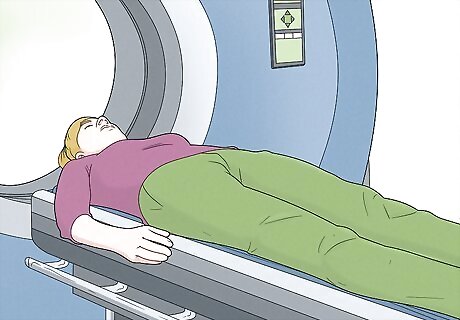
Get a CT scan of your chest to let your doctor take a look at your airways. The first step for diagnosing lung issues is typically a CT scan. If your doctor refers you for one, show up at the testing center or hospital. Change into the hospital gown and lie down on the scanner platform. Then, you will be injected with a contrast dye so that it’s easier for the doctors to see what’s going on inside you and the scan will commence. Complete the CT scan and wait for the results to come back. You may be asked not to eat or drink before taking your CT scan. You cannot wear anything metal for a CT scan. Be sure to take your jewelry off before lying down for the exam. If you are being injected with a contrast dye, you may feel some slight discomfort as the dye enters your bloodstream. It may feel like you’re urinating or you were suddenly exposed to some extremely cold air. This feeling will dissipate after a minute or two, so don’t worry! Your doctor or radiologist will check the CT scan for signs of air trapped in your lungs, as well as thickening of the walls of the bronchi (the passageways that let air in and out of your lungs).
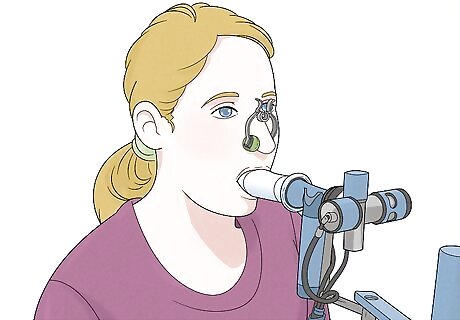
Complete a pulmonary function test to assess your lung capacity. A pulmonary function test (PFT) is a noninvasive breathing test. Show up for your PFT test and follow the lab technician’s instructions. You will breathe into a tube by inhaling, exhaling, and completing breathing exercises to complete this test. Once you’re done, wait for your doctor to contact you to go over the results. This test will help measure how well oxygen and carbon dioxide can travel between your lungs and your blood, as well as the level of oxygen in your blood as you move around. Many people compare this test to using a breathalyzer. You don’t need to worry about experiencing pain or anything like that.
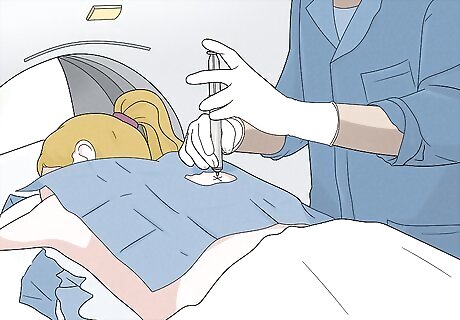
Have a lung biopsy if the first 2 tests point towards popcorn lung. A lung biopsy is usually the last step in confirming popcorn lung. This can sound scary, but it’s a very low-risk procedure and you’ll either get a local or general anesthetic, so you shouldn’t feel any pain. The doctors will remove a tiny piece of lung tissue and analyze it to see if you have the stereotypical scarring and inflammation associated with popcorn lung. A local anesthetic is basically a numbing cream that goes on your skin and keeps you from feeling pain. This is typically used for a needle biopsy where the doctors extract the sample with a needle. A general anesthetic is used to put you to sleep. This is usually done for a thoracoscopic biopsy where the doctors make a small incision to extract a larger sample.
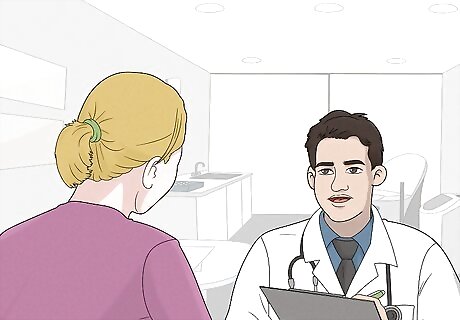
Meet with your doctor to go over the results and cover the next steps. The odds are very low you actually have popcorn lung. If you do have this condition, your doctor will meet with you to go over the results and explain the next steps. Unfortunately, popcorn lung is irreversible and incurable. However, you can certainly manage the symptoms and your doctor will go over your treatment options with you. In the vast majority of cases, the only way to manage the symptoms is to quit smoking, avoid noxious chemicals, and use an oxygen supplement to help you breathe more easily.
Preventing or Managing Symptoms
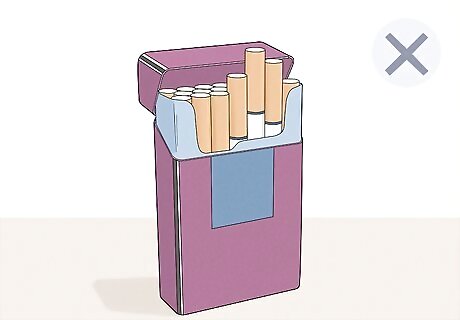
Stop smoking if you’re an active nicotine user. Smoking is generally not good for your health—especially when it comes to your lungs. Breathing in noxious smoke and chemicals increases your risk factor for popcorn lung and it will make the symptoms worse if you’ve already been diagnosed. Quitting smoking is tough, but your odds of success improve with every attempt, so make an honest effort to cut nicotine out of your life. Nicotine patches and nicotine gum are a great option if you want to ween your body off of nicotine over time. There are prescription medications you can take to suppress your urge to smoke. Ask your doctor about these medications and get a prescription to make quitting easier.
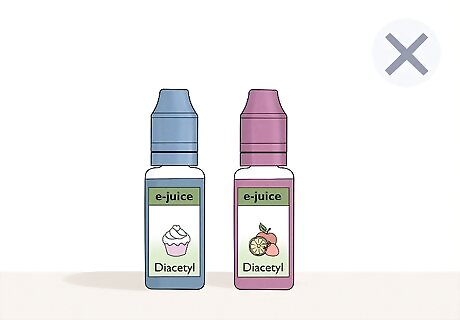
Stay away from flavored e-liquids if you vape tobacco. If you’re an e-cigarette user, do not use flavored juices. Stick with the standard tobacco flavors to minimize the odds that you’re exposed to diacetyl. While the research is still inconclusive on whether vaping causes popcorn lung, what is clear is that many flavored juices contain diacetyl—the chemical responsible for triggering popcorn lung. In a study from 2015, researchers at Harvard tested flavored e-cigarette liquids. They discovered that 39 of the 51 flavors tested contained diacetyl. To be clear, it’s seriously unlikely that these vape juices alone are enough to cause popcorn lung, but you’re best off avoiding them. It’s likely healthier to vape than smoke cigarettes, so don’t pick the butts back up if you’re working on quitting. Just try to avoid flavored liquids and only purchase vape supplies from reputable sources while you work on cutting back.
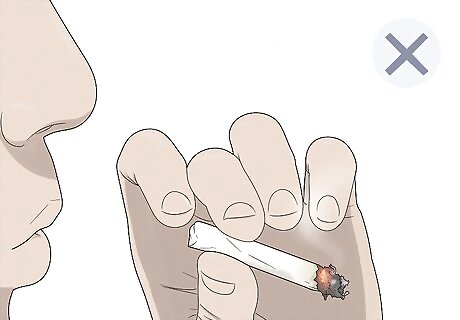
Quit smoking unregulated THC cartridges via a vape pen. If you use a marijuana vape pen, you must use cartridges purchased from a legal and regulated store. Unregulated THC cartridges can contain diacetyl, which is the main cause of popcorn lung. While THC cartridges don’t appear to cause popcorn lung specifically, they can cause a potentially deadly condition that resembles it. In the past few years, there have been several big news stories about teenagers being hospitalized for vaping. Almost all of these cases were caused by smoking THC vape pens that were packed with high-concentrations of diacetyl.
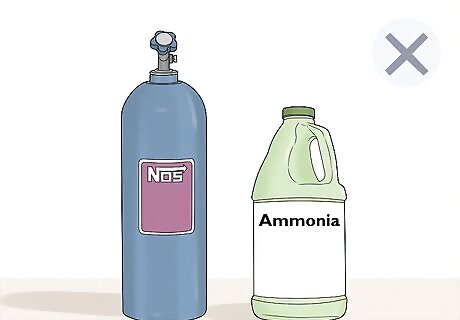
Avoid nitrogen oxides, ammonia, welding odors, and food flavoring fumes. These chemicals are not common unless you work in a factory or on a construction site, but they all damage the lungs and make you susceptible to popcorn lung. If you do work with any chemicals that can harm the lungs, always wear a respirator when you’re on the job site. This will reduce your risk of popcorn lung. Nitrogen oxides are almost exclusively found in rocket fuel and explosives. Mustard gas, fiberglass, coal dust, chlorine gas, and fly ash can also damage your lungs and make you susceptible to popcorn lung. There are other chemicals that can harm the lungs, but these odors are specifically dangerous when it comes to popcorn lung.
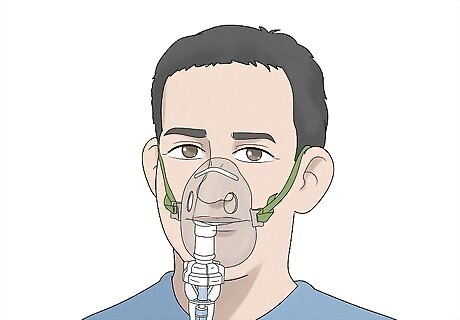
Use oxygen supplementation to help you breathe. If you do get popcorn lung, your doctor will likely prescribe a form of oxygen supplementation. You may use an oxygen tank for a prescribed period every day at home, or you may be asked to carry one with you permanently to keep your lungs happy and healthy. Use this oxygen therapy to reduce your symptoms and make it easier to breathe. It can be a pain to lug an oxygen supply around, but you’ll get used to it. Eventually, it will feel no different than bringing your phone or keys with you when you go out, so try not to get frustrated if you’re prescribed to use oxygen therapy permanently. You may be prescribed antibiotics, steroids, or immunosuppressive drugs to prevent complications from popcorn lung.


















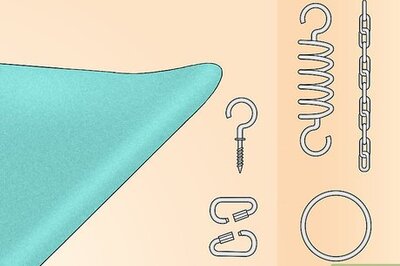

Comments
0 comment